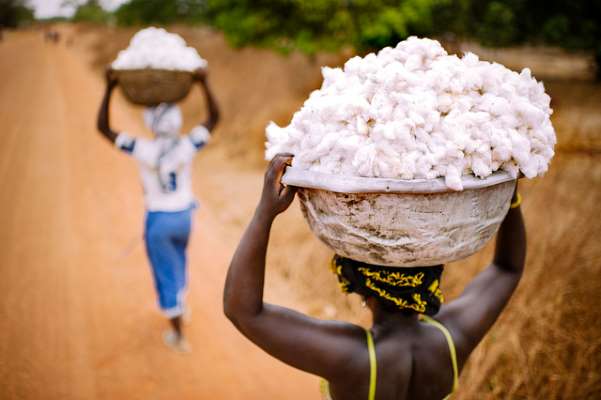
Accounting for 16 per cent of global exports, cotton remains an important export for Sub-Saharan Africa. Cotton production in the region has grown in recent years due to increased area under cultivation and improved yield, indicates the Organization for Economic Co-operation and Development (OECD) and the Food and Agriculture Organization’s (FAO). FAO’s market developments and mid-term projections for world cotton markets for 2022 to 2031 shows, area under cotton cultivation has increased due to a rise in cotton prices. Yet, cotton consumption across spinning mills in the Sub-Saharan Africa region remains limited as most produce is exported.
Export growth to boost market share
In the coming decade, exports from the region are projected to grow at around 1.7 per cent per annum with the region’s market share increasing by more than 1 per cent point to nearly 18 per cent compared to the base period. Textile and apparel exports from other countries like Ethiopia are also rising as processing capacities across the region are being enhanced. Driven by favorable economic conditions, expansion is boosting FDIs in the sector. This could also result in more mills of cotton in the long run and impact net export status.
In 2022, rising consumption and prices will continue to boost cotton prices in international markets. However, global demand may remain under pressure owing to the rising popularity of synthetic fibers, notably polyester.
Rising energy prices to impact cotton demand
FAO states, economic growth and urbanization will continue to impact per capita demand for cotton textiles in developing and emerging economies. Factors other than economic conditions in the developing world may impact global cotton consumption, production, and trade projections. Rising energy prices and the Russia-Ukraine war may impact demand in short term. The industry’s growth may also be affected by emergence of new COVID-19 variants and subsequent movement restrictions.
Adopt sustainable supply chains
FAO adds, raising of interest rates to contain inflation is likely to alter the cost of borrowing, hence investment plans in the sector. Growth in the sector could also be affected by providing of raw material to producers through textile recycling. To boost cotton demand, the industry needs to adopt sustainability standards in supply chains. They need to introduce measures to deal with effects of climate change including droughts and other adverse weather conditions.












